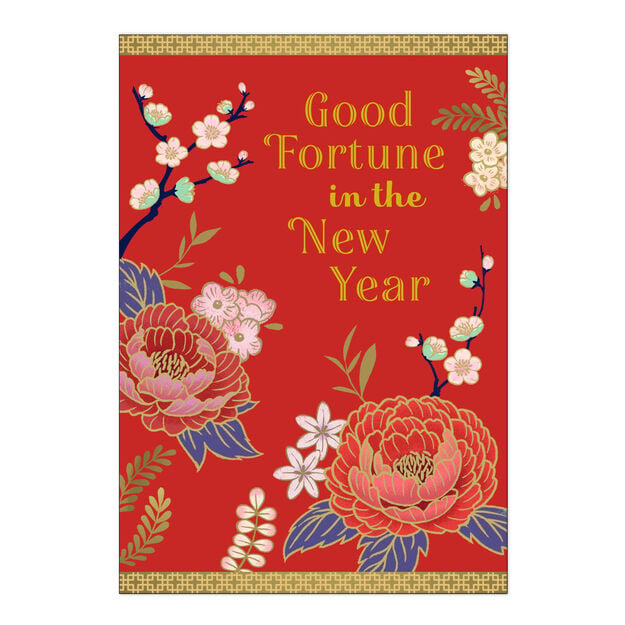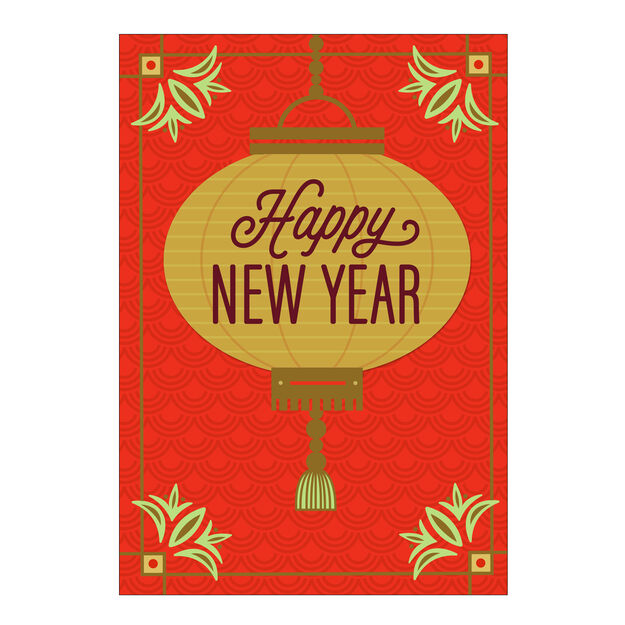Lunar New Year Insights for Your Global Business

DO YOU HAVE PARTNERS IN CHINA OR OTHER ASIAN COUNTRIES?
IN THIS ARTICLE YOU’LL LEARN:
What Lunar New Year is, when it is and who celebrates it
Why the holiday is relevant for U.S.-based businesses
How Hallmark Business Connections can help you be more culturally inclusive
LUNAR NEW YEAR BASICS
First things first, if you’re a little confused about the name of this holiday, you’re not alone. Some people wonder if Lunar New Year and Chinese New Year are the same thing. The answer? Yes and no.
The simplest clarification is this: Chinese New Year is the celebration of Lunar New Year that happens…drumroll, please…in China. But China isn’t the only country that observes Lunar New Year. Lots of other Asian countries and cultures celebrate with their own unique traditions.
So…if you are referencing the elaborate festival that happens in China, celebrations by Chinese businesses/individuals or observations by Chinese Americans and Chinese descendants from around the world, it’s perfectly OK to say Chinese New Year. On the flip side, calling the holiday Chinese New Year when it’s being celebrated in South Korea or Vietnam is inaccurate and insensitive.
The beginning and end of the lunar year are determined by the lunisolar calendar. In China, Korea, Vietnam, Singapore and many other Asian countries, Lunar New Year is a national holiday. So although specific traditions may differ from culture to culture, the celebrations occur on the same date since they use the same lunisolar calendar.
The annual celebration in China is one of the most elaborate festivals in the world. Chinese New Year is all about family reunions, feasting and extensive travel. The celebration begins on the “new moon day” of the first Chinese lunar month in the Chinese calendar system. This means that, like Easter, the date of the celebration moves a bit from year to year. It ends on the first full moon of the lunar calendar, which is fifteen days after the new moon.
The system of Chinese zodiac animals is also based on the lunar calendar. With each Lunar New Year, a new animal rotates in on a 12-year cycle. Though this zodiac originated in China, it is popular in a variety of Asian countries. The Vietnamese zodiac resembles the Chinese zodiac except that the second animal is the Buffalo instead of the Ox, and the fourth animal is the Cat instead of the Rabbit.
Chinese New Year 2025, the Year of the Snake, begins January 29, with festivals lasting through February 2.
THE RELEVANCE FOR U.S. BUSINESSES
Marketers in the U.S. have only just begun to leverage Lunar New Year as a way to connect with Chinese American consumers, despite the fact that, according to the U.S. Census Bureau (as of 2017), there are more than 5 million Chinese Americans in the country and, according to the Pew Research Center, the U.S. Asian population grew 72% between 2000 and 2015 (from 11.9 million to 20.4 million), the fastest growth rate of any major racial or ethnic group.
Tourism is another consumer group to consider. Nearly 3 million Chinese tourists visited the U.S. in 2018, according to the National Travel & Tourism Office, and spent $34.6 billion while here.
In terms of regional relevance in the U.S., The Pew Research Center reports that, aside from Hawaii where U.S. Asians accounted for 56% of the population in 2015, Asians make up the largest share of the overall state populations in California (16%), New Jersey (10%), Nevada (10%) and Washington (10%).
If you do business with vendors and partners in China, Korea, Vietnam, Malaysia, Singapore and other Asian countries, this can be a great opportunity to connect with them, too. Plus you’ll want to be aware of the dates in terms of expected time off for holiday celebrations. As an official public holiday, Chinese citizens can get seven days of absence from work during the festival.
WAYS YOUR BUSINESS CAN PARTICIPATE
To connect with a business contact who observes this annual holiday, send a Lunar New Year card and express your appreciation for their continued partnership and wish for their prosperity in the new year.
Hallmark recently debuted Eight Bamboo, a line of cards specifically created to celebrate relationships and life moments within Chinese American culture.
Eight Bamboo was created to help culturally fluid Chinese Americans and Canadians meaningfully connect with loved ones at any time, but especially during culturally significant holidays like Lunar New Year. Eight Bamboo cards are known for honoring the beauty and tradition of Chinese heritage, while adding modern design touches and an elevated level of craftsmanship that makes every occasion feel special.
If you want to send Chinese or Lunar New Year greeting cards on behalf of your business, be sure to add a personal message and make the gesture even more meaningful. Here are a few ideas to help you say the right thing:
There’s no better way to begin the new year than by letting you know how much you’re appreciated. Wishing you a happy and auspicious year.
I hope you know how much I value your business. As the new year begins, I wish you good health and good fortune, and I look forward to helping you make progress toward your goals.
Wishing you health, happiness and prosperity in the new year. I always enjoy meeting with you, and I hope we’ll get to talk again soon!
If your operations are consumer-facing in U.S. cities dense with Chinese American populations or many Chinese tourists, consider displaying posters celebrating Chinese New Year and feature snacks like new year cake, sesame seed balls and walnut cookies.
To celebrate the holiday with employees and honor business partners across the globe, explore traditional Chinese, Vietnamese and Korean food and customs with your U.S. staff for cultural enrichment.
FINAL THOUGHTS ON CULTURAL INCLUSIVITY
Businesses have a chance to grow when they make deeper emotional connections with their stakeholders. Identifying shared values despite culture or geography can magnify what we all have in common as well as celebrate our unique differences.
If your company decides to reach out to partners observing Lunar New Year, bear in mind the meaningful details that make this holiday foundational to cultural identity—aspects like respect, traditions, family bonding, good fortune and the pursuit of prosperity.
 SHOP CHINESE NEW YEAR CARDS
SHOP CHINESE NEW YEAR CARDS
In this Article
-
DO YOU HAVE PARTNERS IN CHINA OR OTHER ASIAN COUNTRIES?
-
IN THIS ARTICLE YOU’LL LEARN:
-
LUNAR NEW YEAR BASICS
-
THE RELEVANCE FOR U.S. BUSINESSES
-
WAYS YOUR BUSINESS CAN PARTICIPATE
-
FINAL THOUGHTS ON CULTURAL INCLUSIVITY
Products
Similar Articles







